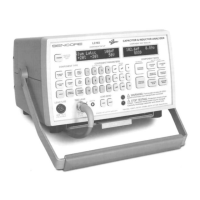36
Double Layer and “High R” Electrolytics
Double layer electrolytic capacitors are commonly
known by trade names such as “Supercap” or “Gold
Cap.” These capacitors are quite easy to identify. Double
layer lytics have an extremely large capacitance value
for their physical size. They are found in various
physical shapes and sizes. Their value is marked in
Farads, rather than in picofarads or microfarads.
The polarity of a double layer lytic is often printed on
the case, although a longer lead may also be used to
identify the positive terminal. Some double layer lytics
use a line next to one lead which may be either “+” or
“-”. If there is no other marking, the terminal that is part
of the metal case is the negative lead.
There are two main types of double layer lytics. They are
divided between capacitors needed to supply current in
the uA range and capacitors needed to supply current in
the mA range. Essentially, the difference is the
capacitors needed to supply current in the mA range are
typically two or more capacitors in series and will have a
higher resistance characteristic. For this reason, the
LC103 contains two selections for double layer lytic
component types, DOUBLE LAYER LYTIC and HIGH
R DOUBLE LAYER. Typically, double layer lytics
having a voltage rating of higher than 4 volts will be
“High R.”
Fig. 23: Various types of double layer electrolytic
capacitors.
Ceramic Capacitors
Ceramic capacitors may be found in many different sizes
and shapes. The most common type of ceramic capacitor
is the flat, round ceramic disc. The ceramic disc is
unique in its shape, and is easily identifiable from other
ceramics, and other types of capacitors. The ceramic disc
is also unique from other types of ceramic capacitors in
that it may have small amounts of normal leakage.
Two other kinds of ceramic capacitors which are easily
identified from other capacitor types are the axial lead
and chip types. Some axial lead ceramic capacitors may
look the same as resistors and inductors which also use
the same case type. You can easily determine if the
component is a resistor, capacitor or inductor from its
location in the circuit. The LC103 can also be used to
help identify these unknown components, as explained
in a following section, “Identifying Unknown
Components.”
There are a few other kinds of ceramic capacitors
besides the three types identified here. These types, such
as molded ceramics and encapsulated ceramics, are very
similar in appearance to film capacitors, and are difficult
to differentiate from films by physical appearance. This
presents no problem when testing these ceramics with
the LC103, since any leakage or D/A in a ceramic
capacitor, other than a ceramic disc, is not allowable. If
you are unable to identify the capacitor as a ceramic, test
it as an “ALL OTHER CAPS” type.
Fig. 24: Various types of ceramic capacitors.
All Other Capacitors
The final capacitor type grouping for LC103 ReZolver
GOOD/BAD testing is “ALL OTHER CAPACITORS.”
As its name implies, capacitors in this category do not
have the electrical (or physical) characteristics to fit into
any of the other categories. Capacitors included in this
grouping are films, micas, air dielectrics, papers, oil
filled capacitors, and other similar types. (There are
numerous types of film capacitors such as mylar,
polyester, polycarbonate, polystyrene, and
polypropylene). Though each of these capacitor types
has different dielectrics and somewhat different
parameters, they are all similar in that when tested with
the LC103, they should have no dielectric absorption or
leakage. If you measure any leakage, or D/A in an “ALL
OTHER CAPACITOR” type it is bad.
NOTE: When replacing any of these capacitors, always
replace it with the same type originally used in the
circuit. For example, a mylar film capacitor should only
be replaced with another mylar film. This is especially
important for components in areas of the schematic
designated as “Safety Critical.”

